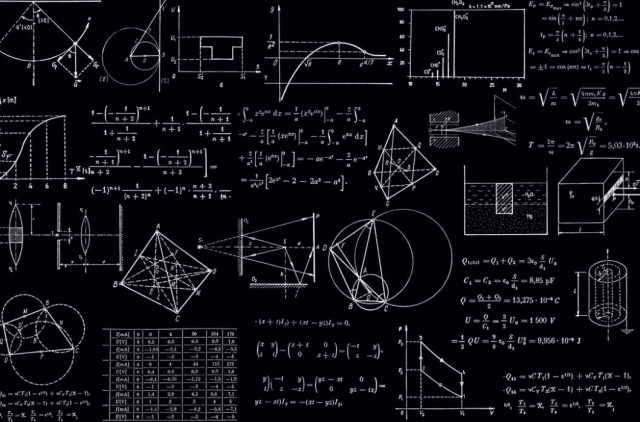For every objective, we can see different dimensions. Either it may be two-dimensional or three-dimensional etc. Analyzing all these dimensions of a particular object is known as dimensional analysis. In simple words, the dimensional analysis provides mathematical answers for the physical quantities. We can measure using lengths and angles for physical objects.
The definition of Dimensional Analysis is an analysis using physical quantities. If those dimensions are the same, then they are said to be equal. Similarly, we can add or subtract those physical quantities using the dimensions. So let’s have a detailed study on what dimensional analysis is, its principles, applications etc.
What is dimensional analysis?
Dimensional analysis is an approach to finding the relationship between two physical quantities based on their dimensions and units. Unit conversion also plays a vital role in dimensional analysis.
Dimensional analysis and Unit conversion
While comparing two physical quantities, we need to check that all the quantities have the same units. If not, we need to convert them. These conversion factors play a crucial role in comparing physical objects, so dimensional analysis is also known as the Unit factor method or factor label method.
Illustration,
As we know that 1000 meters are equal to 1 km,
Then,
5 km = 5 × 1000 meters = 5000 meters
Hence, 1000 meters is the conversion factor.
Another illustration to understand the principle of dimensional analysis is if two persons have pens with each. The first person has a total of 90 pens. Where the second person has in the form of packages, each package consists of 10 pens. A second person has nine packages with him.
Now we are converting the packages into several pens. So we need to multiply the number of packages and the number of pens in each package. So, 9*10= 90. Hence, both the persons have 90 pence with each of them.
In this way, we convert the units and compare them using dimensional analysis. Like this, consider several examples of dimensional analysis.
Verification of physical equation using dimensional analysis
Let’s assume that we had confusion on distance, speed and time equations. So I need to verify which one is correct among the following,
time = distance/speed, or
time = speed/distance.
So, let’s decrease or convert both units into their fundamental stage. We will get,
[T] = [L]/[L][T]-1 = [T].
Hence, time = distance/speed.
In this way, we can also check the physical equations.
Principle of homogeneity in dimensional analysis
According to the principle of homogeneity, for every physical equation, the dimensions should be equal on both sides. If they are unequal, it doesn’t represent a physical equation. It will become a physical inequation. Let’s get more idea about this principle using an example.
Ex:- Verify the equation s = ut ½ at2. Whereas = displacement
u = initial velocity
- = Time
a = acceleration
v = final velocity
Sol:-
As we know that L.H.S = s and
R.H.S = ut 1/2at2
The dimensional formula for the L.H.S can also be written as
s = [L1M0T0] ………..(1)
According to the unit Factor method, we can convert the units of both physical quantities. So,
R.H.S = ut ½ at2,
Simply, we can write
R.H.S = [u][t] [a] [t]2
[L1M0T-1][L0M0T-1] [L1M0T-2][L0M0T0]
=[L1M0T0]………..(2)
If we observe both (1) and (2),
we will get [L.H.S] = [R.H.S]
Hence, it is proven that the given equation is dimensionally correct by the principle of homogeneity.
Consistency of Dimensional analysis
According to the principle of homes in a day, both the L.H.S and R.H.S are equal for every physical quantity. It means that both physical quantities have equal and similar dimensions. If the queen of physical quantities has different dimensions, then the equation is dimensionally incorrect.
So, the consistency of the dimensional equation states that if both the physical quantities have similar dimensions, they are said to be consistent.
Applications of dimensional analysis
Dimensional analysis is a considerable study of finding relationships between two or more physical quantities. It is very useful for day-to-day life. In the field of physics, dimensional analysis has different applications. They all are listed below-
- Using the principle of homogeneity, which states that both L.H.S is equal to R.H.S, we can easily verify the correctness of any physical equation.
- The unit center method is also applied in converting various physical quantities from one system to another. Either from C.G.S to M.K.S or from M.K.S to C.G.S etc.
- Another application of dimensional analysis is representing the nature of physical quantity by measuring its angles and lengths.
- We can also derive formulas using dimensional analysis.
Besides all these applications, dimensional analysis also possesses a few limitations.
Limitations of dimensional analysis
Through dimensional analysis is very useful in many ways, it has failed in finding few relations. They are-
- It always provides information about variables. It was unable to provide information regarding the constants in the physical equation.
- It can verify only algebraic equations. It failed to check the correctness of equations containing logarithmic, trigonometric and exponential functions.
- We can find whether the dimensions are equal or not. But we cannot explain whether the physical quantity is a scalar or a vector.
These are the few limitations possessed by dimensional analysis.
Conclusion
Dimensional analysis is an advanced concept in physics that has several applications in real life. Dimensional analysis is defined as a study of measuring the physical quantities based on their dimensions.
We are also able to compare two physical quantities using dimensional analysis. It follows the principle of homogeneity, which states that both sides have equal dimensions. It is also said to be the consistency of that physical quantity. These are the principles, examples and applications of dimensional analysis.
Hence dimensional analysis is an advanced concept in physics that has several applications in real life. Dimensional analysis is defined as a study of measuring the physical quantities based on their dimensions.

Speaks from heart, always too passionate and driven by emotions. Spins the words with kindness & sharpness, intriguing your ever-inscrutable minds.




